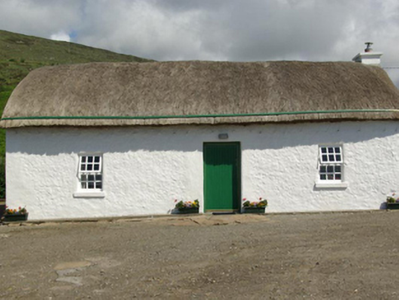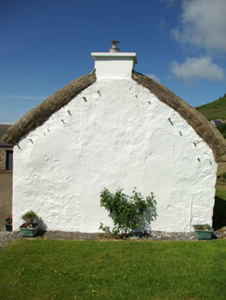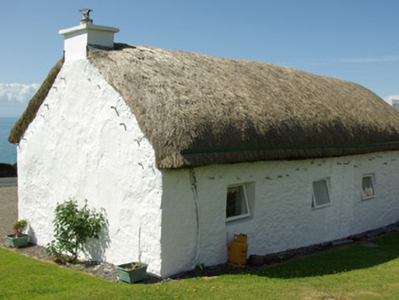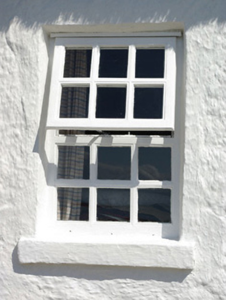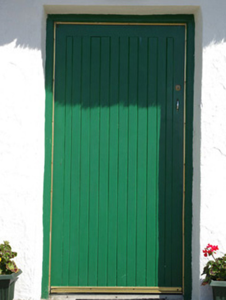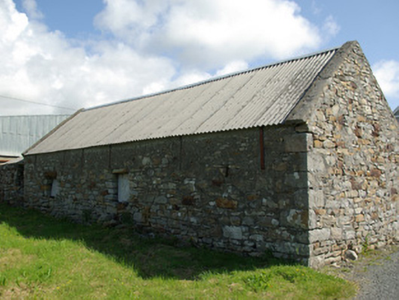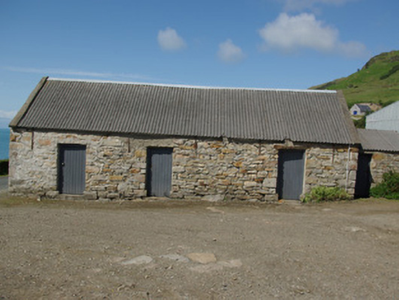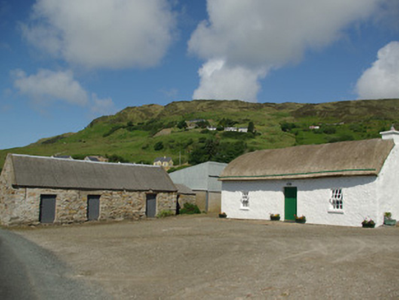Survey Data
Reg No
40909719
Rating
Regional
Categories of Special Interest
Architectural, Technical
Original Use
House
In Use As
House
Date
1840 - 1880
Coordinates
164573, 374965
Date Recorded
05/06/2008
Date Updated
--/--/--
Description
Detached three-bay single-storey vernacular house, built c. 1860, still occupied. Pitched/domed thatched roof (recently renewed) having smooth rendered chimneystack to the east gable end and having pegs for securing ropes/nets over thatch at eaves level to both the front (south) and the rear (south) elevations, and to the gable end. Roughcast rendered walls. Square-headed window openings having two sills and replacement multiple-pane timber casement windows. Modern window openings to the rear elevation (north) having single-pane timber casement windows. Central square-headed door opening having replacement timber sheeted door. Set back from road with gravel forecourt to the south and with lawn to the rear (north) and to the east. Set in elevated position with views over The Atlantic Ocean to the south. Located in the rural countryside to the west of Killybegs and the east/south-east of Kilcar. Single-storey outbuilding adjacent to the south-west having pitched corrugated-metal roof with raised rendered verges to the gable ends, rubble stone walls, and with square-headed doorways having timber sheeted doors.
Appraisal
Despite some recent alterations, this appealing thatched vernacular house retains much of its early character and form, and is an attractive feature in the scenic landscape to the west of Killybegs. Modest in scale, it exhibits the simple and functional form of vernacular building in Ireland. Of particular interest in the survival of the thatch roof, although recently renewed, which is now sadly becoming increasingly rare in Donegal. The rounded roof is a typical feature of thatched houses located close to the sea in exposed areas in the north-west of Ireland, while the pegs to the eaves were used to tie ropes (and sometimes nets) over the roof to secure it against the prevailing winds, as is the case here at Shawly. The formerly blank rear elevation is another characteristic feature of the extended Irish vernacular tradition. The loss of the original fittings to the openings, although regrettable, fails to detract substantially from its visual expression. The location of the chimneystacks suggests that this building is of the ‘direct entry’ type that is characteristic of the vernacular tradition in north-west Ireland. This house represents an interesting surviving example of a once ubiquitous building type in the rural Irish countryside, and is a valuable addition to the vernacular heritage of County Donegal. The single-storey rubble stone outbuilding to site adds considerably to the setting and context of this vernacular dwelling.

